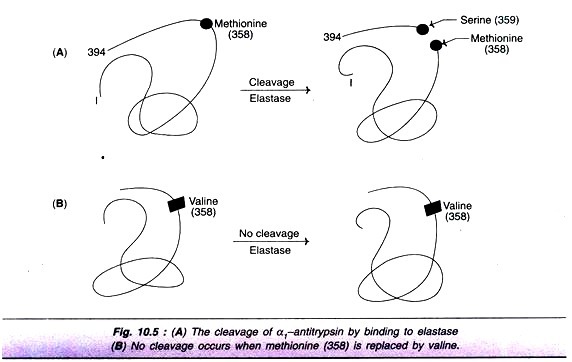Microbial growth is an autocatalytic process: no growth will occur without the presence of at least one viable cell and the rate of growth will increase with the amount of viable biomass present.
This can be represented mathematically by the expression:
where dx/dt is the rate of change of biomass, or numbers x with time t, and µ is a constant known as the specific growth rate.
The same exponential growth rule applies to filamentous fungi which grow by hyphal extension and branching since the rate of branching normally increases with hyphal length.
Integration of Equation (3.1) gives:
or, taking natural logarithms and re-arranging:
where xo is the biomass present when t = 0.
The doubling or generation time of an organism T can be obtained by substituting x- 2x0 in Equation 3.3. Thus:
An alternative way of representing exponential growth in terms of “the doubling time is:
This can be simply illustrated by considering the case of a bacterial cell dividing by fission to produce two daughter cells. In time π, a single cell will divide to produce two cells; after a further doubling time has elapsed four cells will be present; after another, eight, and so on. Thus, the rate, of increase as well as the total cell number is doubling with every doubling time that passes.
If, however, we perform the experiment measuring microbial numbers with time and then plot log x against time, we obtain the curve shown as Figure 3.1 in which exponential growth occurs for only a part of the time
A simple analysis of this curve can distinguish three major phases. In the first, the lag-phase, there is no apparent growth while the inoculum adjusts to the new environment, synthesizes the enzymes required for its exploitation and repairs any lesions resulting from earlier injury, e.g. freezing, drying, heating.
The exponential or logarithmic phase which follows is characterized by an increase in cell numbers following the simple growth law equation. Accordingly, the slope of this portion of the curve will equal the organism’s specific growth rate µ, which itself will depend on a variety of factors (see below).
Finally, changes in the medium as a result of exponential growth bring this phase to an end as key nutrients become depleted, or inhibitory metabolites accumulate, and the culture moves into the stationary phase. One way of representing this overall process mathematically is to modify the basic growth Equation (3.1) so that the growth rate decreases as the population density increases.
An equation that does this and gives us a closer approximation to the observed microbial growth curve is the logistic equation:
where K is /the carrying capacity of the environment (the stationary phase population) and µm, the maximum specific growth rate. As x increases and approaches K, the growth rate falls to zero.
Or, in its integrated form:
The significance of exponential growth for food processing hardly needs emphasizing. A single bacterium with a doubling time of 20 minutes (µ= 2.1 hr-1) growing in a food, or pockets of food trapped in equipment, can produce a population of greater than 107 cells in the course of an 8-hour working day.
It is therefore, a prime concern of the food microbiologist to understand what influences microbial growth in foods with a view to controlling it.
The situation is complicated by the fact that the microflora is unlikely to consist of a single pure culture. In the course of growth, harvesting/slaughter, processing and storage, food is subject to contamination from a range of sources.
Some of the micro-organisms introduced will be unable to grow under the conditions prevailing, while others will grow together in what is known as an association, the composition of which will change with time. The factors that affect microbial growth in foods, and consequently the associations that develop, also determine the nature of spoilage and any health risks posed.
For convenience they can be divided into four groups along the lines suggested 40 years ago in a seminal review by Mossel and Ingram (Table 3.1) physicochemical properties of the food itself (intrinsic factors); conditions of the storage environment (extrinsic factors); properties and interactions of the microorganisms present (implicit factors); and processing factors.
This last group of factors (subsumed under intrinsic properties by Mossel and Ingram) usually exert their effect in one of two ways: either they change an intrinsic or extrinsic property, for example slicing a product will damage antimicrobial structures and increase nutrient availability and redox potential, or they eliminate a proportion of the product microflora as would occur in washing, pasteurization or irradiation.
Although it is often convenient to examine the factors affecting microbial growth individually, some interact strongly, as in the relationships between relative humidity and water activity aw, and gaseous atmosphere and redox potential. For this reason, in the following discussion, we have not been over zealous in discussing individual factors in complete isolation.


